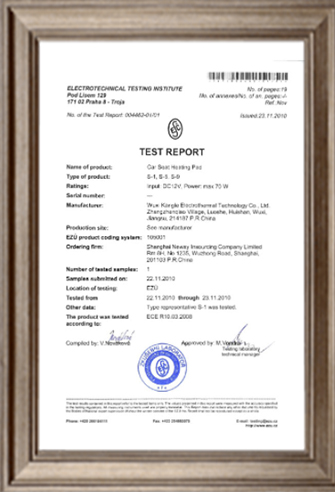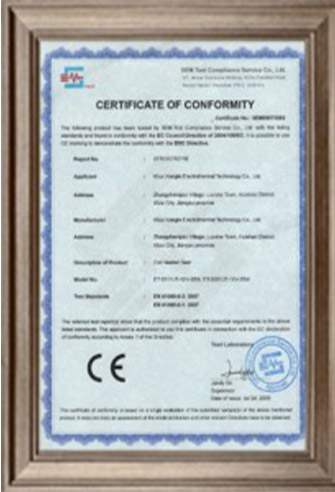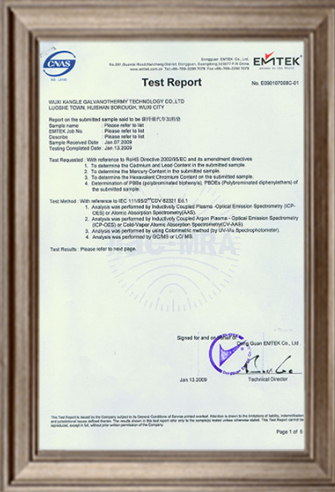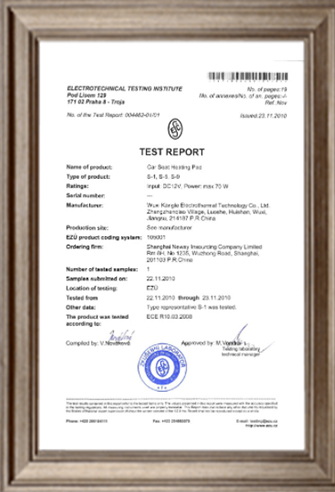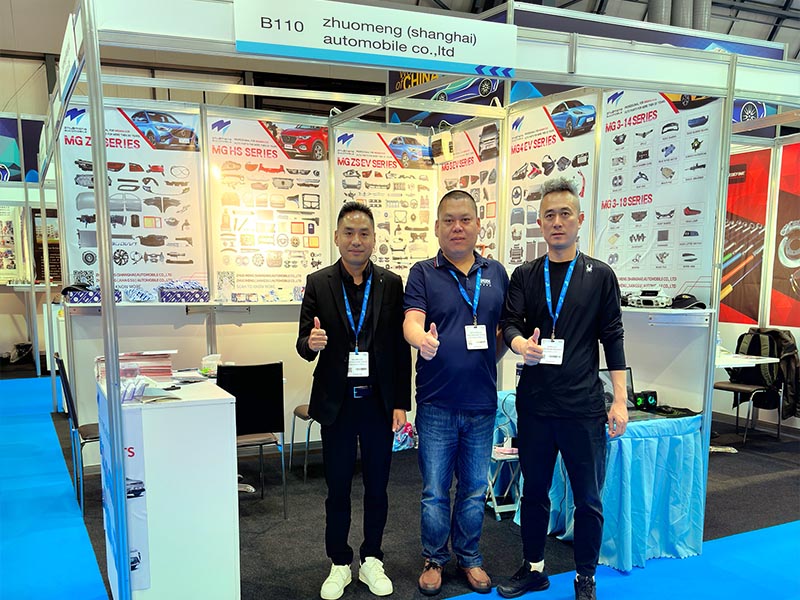Three-way catalysis.
Three-way catalysis refers to the conversion of harmful gases such as CO, HC and NOx from automobile exhaust into harmless carbon dioxide, water and nitrogen through oxidation and reduction. The carrier part of the three-way catalyst is a piece of porous ceramic material, which is installed in a special exhaust pipe. It is called a carrier because it does not participate in the catalytic reaction itself, but is covered with a coating of precious metals such as platinum, rhodium, palladium and rare earths. It is the most important external purification device installed in the automobile exhaust system.
The working principle of the three-way catalytic converter is: when the high-temperature automobile exhaust passes through the purification device, the purifier in the three-way catalytic converter will enhance the activity of the three gases CO, hydrocarbons and NOx, and promote it to undergo a certain oxidation-reduction chemical reaction, in which CO oxidized into a colorless, non-toxic carbon dioxide gas at high temperature; Hydrocarbons are oxidized to water (H2O) and carbon dioxide at high temperatures; NOx is reduced to nitrogen and oxygen. Three harmful gases become harmless gases, so that car exhaust can be purified. Assuming there's still oxygen available, the air-fuel ratio is reasonable.
Because the fuel contains sulfur, phosphorus and the antiknock agent MMT contains manganese, these chemical components will form chemical complexes on the surface of the oxygen sensor and inside the three-way catalytic converter with the exhaust gas discharged after combustion. In addition, due to the driver's bad driving habits, or long-term driving on congested roads, the engine is often in an incomplete combustion state, which will form carbon accumulation in the oxygen sensor and three-way catalytic converter. In addition, many areas of the country use ethanol gasoline, which has a strong cleaning effect, will clean the dirt in the combustion chamber but can not decompose and burn, so with the emission of exhaust gas, these dirt will also be deposited on the surface of the oxygen sensor and the three-way catalytic converter. It is due to many factors that after the car is driven for a period of time, in addition to the carbon accumulation in the intake valve and combustion chamber, it will also cause the oxygen sensor and the three-way catalyst poisoning failure, the three-way catalyst blocking and the EGR valve blocked by sediment and other failures, resulting in abnormal engine work, resulting in increased fuel consumption, power decline and exhaust exceeding the standard.
Traditional regular engine maintenance is limited to the basic maintenance of the lubrication system, intake system and fuel supply system, but it cannot meet the comprehensive maintenance requirements of modern engine lubrication system, intake system, fuel supply system and exhaust system, especially the maintenance requirements of emission control system. Therefore, even if the vehicle is maintained normally for a long time, it is difficult to avoid the above problems.
In response to such failures, the measures taken by maintenance enterprises are usually to replace oxygen sensors and three-way catalytic converters, but due to the problem of replacement costs, disputes between maintenance enterprises and customers continue. In particular, those oxygen sensors and three-way catalysts that have not been replaced by their useful life are often the focus of disputes, and many customers even attribute the problem to the quality of the car.
In order to solve this headache and difficult to solve the problem of automobile production enterprises, maintenance enterprises, maintenance management departments and environmental protection departments, relevant scientific research institutions have researched and designed a new set of engine routine maintenance methods and technologies for the defects of traditional engine routine maintenance methods.
The content of this new technology is: when carrying out regular maintenance for customers, in addition to replacing the oil and the maintenance of the three filters, the cleaning and maintenance of the three-way catalytic converter is added. Its technical features are: Organic combination of "Automobile exhaust gas control system inspection and maintenance items" and traditional engine regular maintenance methods to make up for the traditional engine regular maintenance methods can not meet the requirements of modern engine maintenance defects, The passive solution to the problem of abnormal operation of the emission control system of the environmental protection engine will be changed to the active prevention of abnormal operation of the emission control system of the environmental protection engine.
1, if there is mechanical damage, hot sintering, mileage of more than 200,000 kilometers, lead poisoning, cleaning effect is not large.
2, such as engine in the middle of the cleaning, immediately disconnect the engine and equipment connection hose, and close the flow valve. Restart the engine, idle steady, can be reconnected and adjusted.
3, check whether the mixture concentration is appropriate to ensure that the liquid can be inhaled in a fog inlet.
4, cleaning three parts should be cleaned after the throttle, fuel nozzle and combustion chamber.
5, during the cleaning process, the idle speed should not be too high to avoid overheating of the three-way catalytic converter.
6, do not drop the cleaning liquid on the vehicle paint.
7, the work site away from the fire source, do a good job of fire measures.
If you want to know more, keep reading the other articles on this site!
Please call us if you need such products.
Zhuo Meng Shanghai Auto Co., Ltd. is committed to selling MG&MAUXS auto parts welcome to buy.


